The 8 essential factors to make your website fundraising oriented

by Gio Fumagalli
International Director of Marketing and Digital Strategy

Hard times for non-profit organisations (but were they ever easy?)
The statistics are not reassuring: the cost of digital traffic becomes, every year, a third more expensive than the previous year. And the real bad news is that the situation is definitely not going to get any better: giants of online commerce (such as Amazon) are increasingly consolidating their positions, business titans that used to buy advertising on traditional media such as TV, radio and newspapers are entering the online advertising traffic market. To this situation it must be added that the level of know-how on digital advertising in the not-for-profit sector is not always consolidated.
However, there is some good news.
The first is that never in history has an organisation had so many tools to support its work in a concrete and effective way. So much information exists and is so easily accessible to anyone with a computer and an internet connection, as never before in human history. And this is undoubtedly a good thing.
The second piece of good news, on the other hand, is that in a market with these apocalyptic characteristics, there are infinite ways to stay alive and multiple other ways to grow your fundraising projects. It’s true that everything evolves quickly, but everything has practically already been studied and the shelves of offline and online bookstores are filled with literature on these topics.
Before moving on to some tremendously practical advice, however, I want to clarify one thing: this article was written to offer one more tool to non profit organisations, to assist from the point of view of digital marketing their transaction from underperforming organisations online to organisations able to make the most of the resources and possibilities available trying to break records every day in the industry in which they operate.
Let’s start with the basics
The first thing you need to do to raise money online is to switch from a traditional marketing approach to a direct-response marketing approach; if by chance this definition turns out to be completely unfamiliar, don’t worry, because we’ll go into detail about that too.
The basic idea is simple: most organisations tend to think of their marketing by emulating big brands or big multinational companies. In doing so, however, not-for-profits that try to emulate Nike or Coca Cola stumble into a long series of mistakes, first of all that of starting to invest (and burn) huge amounts of money in image, brand awareness and presence.
Have you ever seen a rabbit imitate an elephant? Well, we’re talking about the same thing. Imitating a multinational company with 25,000 employees and offices in a hundred countries makes no sense. These multinationals have every reason in the world to invest their budgets in advertising and marketing not aimed at direct sales; but your agenda, like that of every single small or medium-sized organisation, is much simpler:
- you need to find some NPOs your size that have already been successful;
- you must understand and study the principles of their communication;
- you must take them as a model and replicate (which does not mean copy!) their actions in a profitable way.
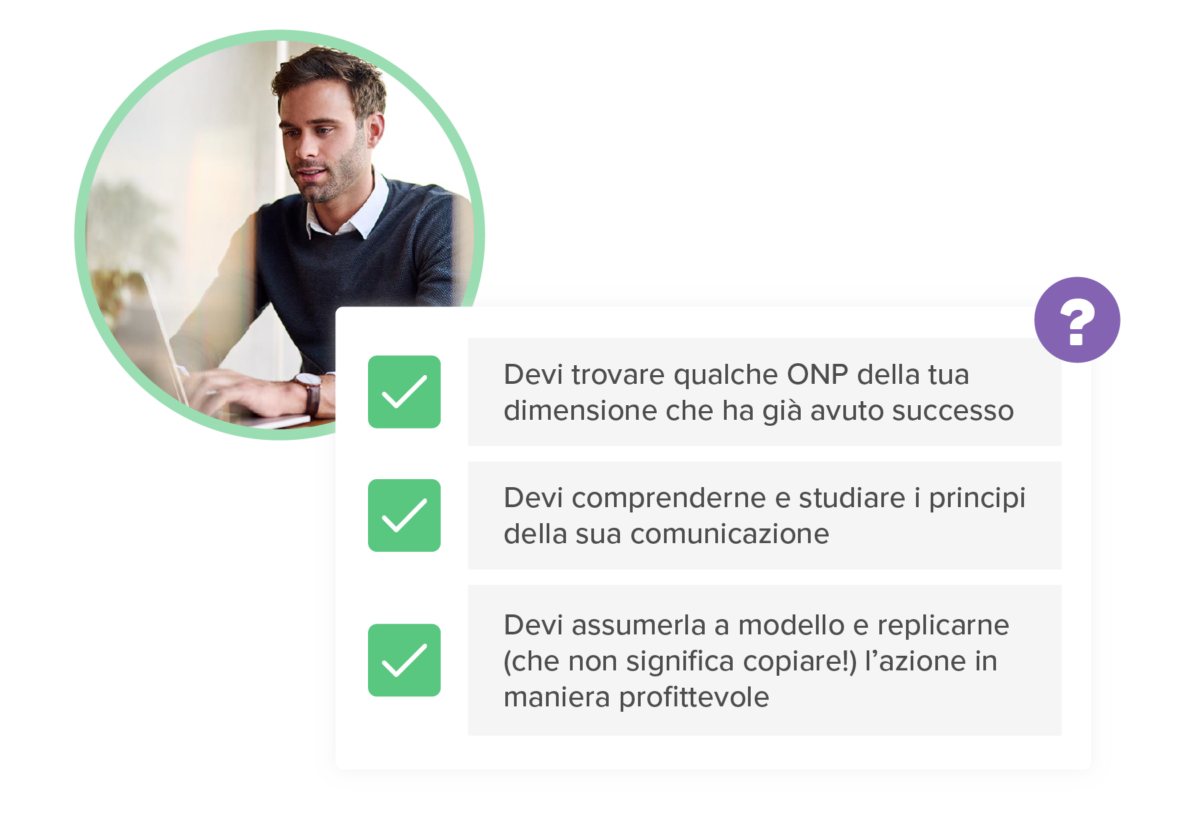
Specifically, I’m suggesting you apply two basic principles:
- Spend €1 on marketing to get €2 or €20 or €200 back – as quickly as possible – but remember one key thing: try to track all the investments you make.
- Never spend a single euro on marketing that does not quickly and easily return you €2 or €20 or €200.
You will have to be very careful who you study and model yourself after. Consider their strategy and plans, and if the goals they are achieving do not coincide with those you would like to achieve, then it’s clear: do not invest a single minute in studying them or, even worse, emulating them!
Most not-for-profits are still struggling to create their own digital marketing strategy and emulating these organisations does not make sense. There are many reasons for this, but one of the biggest is what is known as marketing incest.
What happens when an NPO enters the digital market? It enters it, looks around, takes note of what everyone else is doing and copies it. Gradually, over time, some also try to improve their strategies, but the result is that they never leave the masses. And this happens in every industry: all the market players stand in a circle, looking at what is going on inside, and completely turning their backs on what is going on outside their industry. It’s called marketing incest precisely because nobody ever leaves their own context.
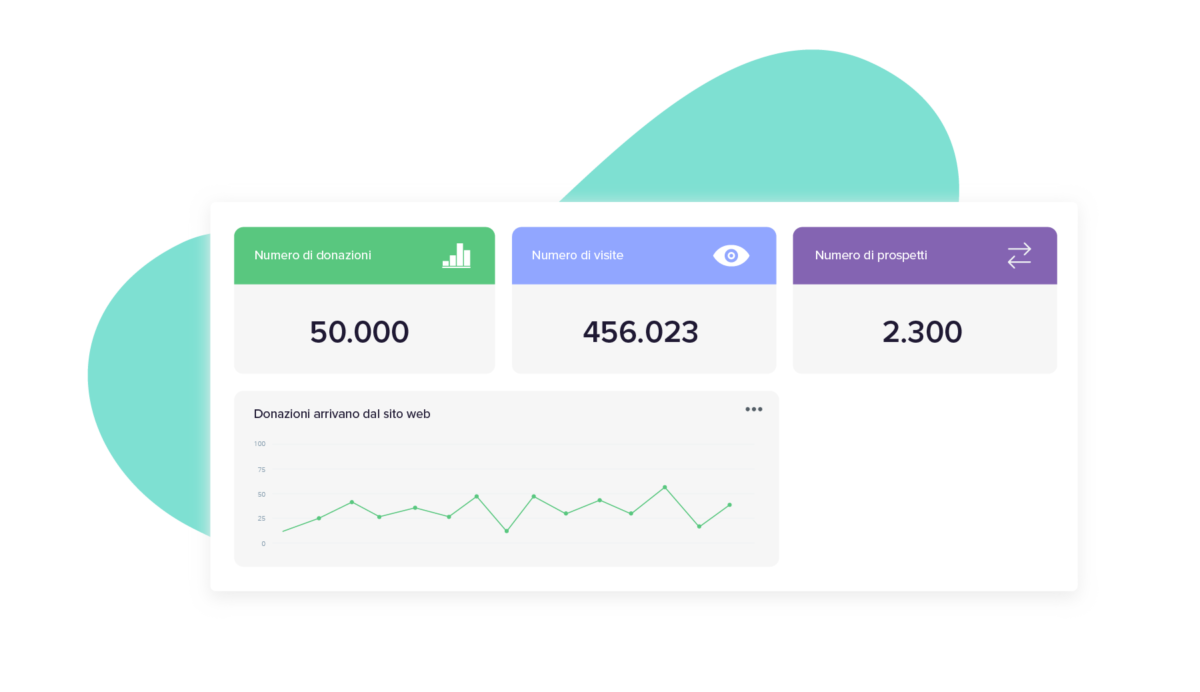
What did you design your website for?
One of the services I am most often asked for during my sporadic consultancy activities is the audit and revision of the corporate website. I am proudly shown the new website that has just been inaugurated, in which sometimes thousands of euros and months of work have been invested. Nowadays, it doesn’t take much to make a good website: any agency working with a junior graphic designer fresh out of school can come up with a clean and attractive website design. The problem is certainly not the design. The problem, as always, is the numbers. When I look up from the site and ask the site owner some questions, that’s when the real problems arise. The questions I ask are not difficult:
- how many visits can your site generate?
- how many leads do you acquire each month?
- how many donations come from the website?
- what percentage of total fundraising comes from the website?
- how do you manage site churn?
Most of the time, the answer is the worst of all: “I do not know”.
The days of just having an informative website to tell the world how incredible your not-for-profit is are long gone. Having an aesthetically pleasing website is a good place to start, but certainly not enough.
The aim of your website must be to convert your visitor into a donor 24 hours a day, seven days a week. This conversion does not necessarily have to take the form of an online money transaction, because in some cases this is virtually impossible; however, the website must do the bulk of the effort for you, becoming one of your main tools of persuasion. And it is up to each and every one of us to make sure that our web portal becomes just such a tool.
Your website needs to move from being a generic representative website, whose main characteristic is that it is designed to impress, to being a direct-response website, i.e. a website designed to trigger an action. This action is clearly not a random action, but a specific action (even more than one) within your persuasion process. Direct-response sites are designed precisely to motivate and induce people to progress within a given funnel, to strengthen our relationships with them and above all to transform generic traffic first into leads, and then into donors.
So here is the concrete part, I have summarised for you the 8 essential elements of a direct-response site:
A clear Unique Selling Proposition
A Unique Selling Proposition (USP) is a theoretical model of advertising operation formulated by Rosser Reeves in the 1940s. It is one of the best ways to represent your unique differentiating idea and was formulated by Reeves by taking Claude C. Hopkins’ Hard Selling advertising philosophy to the extreme. A good USP can be summed up as the best and clearest answer you can give to this question: why should I choose you instead of your competitors or instead of choosing nobody? Why should I support this very project and this very cause? And why now? Having the answer to this question clear and concise on your website is the best way to define the people who are on our portal.
At least one lead magnet
Lead magnet literally means a magnet for potential customers, which in our case are called potential donors, and is something that allows you to get a contact on which you can then build a relationship. It has to be able to be promoted and advertised, it has to help you establish your authority, your credibility, your expertise and at the same time it has to help you promote your programmes and values. Some examples? Books, reports, ebooks, mini video courses, a list of resources, a video series, the results of a test, a software free trial, webinars, signing a petition, access to a private group, a gadget, a coupon for a charity shop, free shipping or even things like a prayer intention!
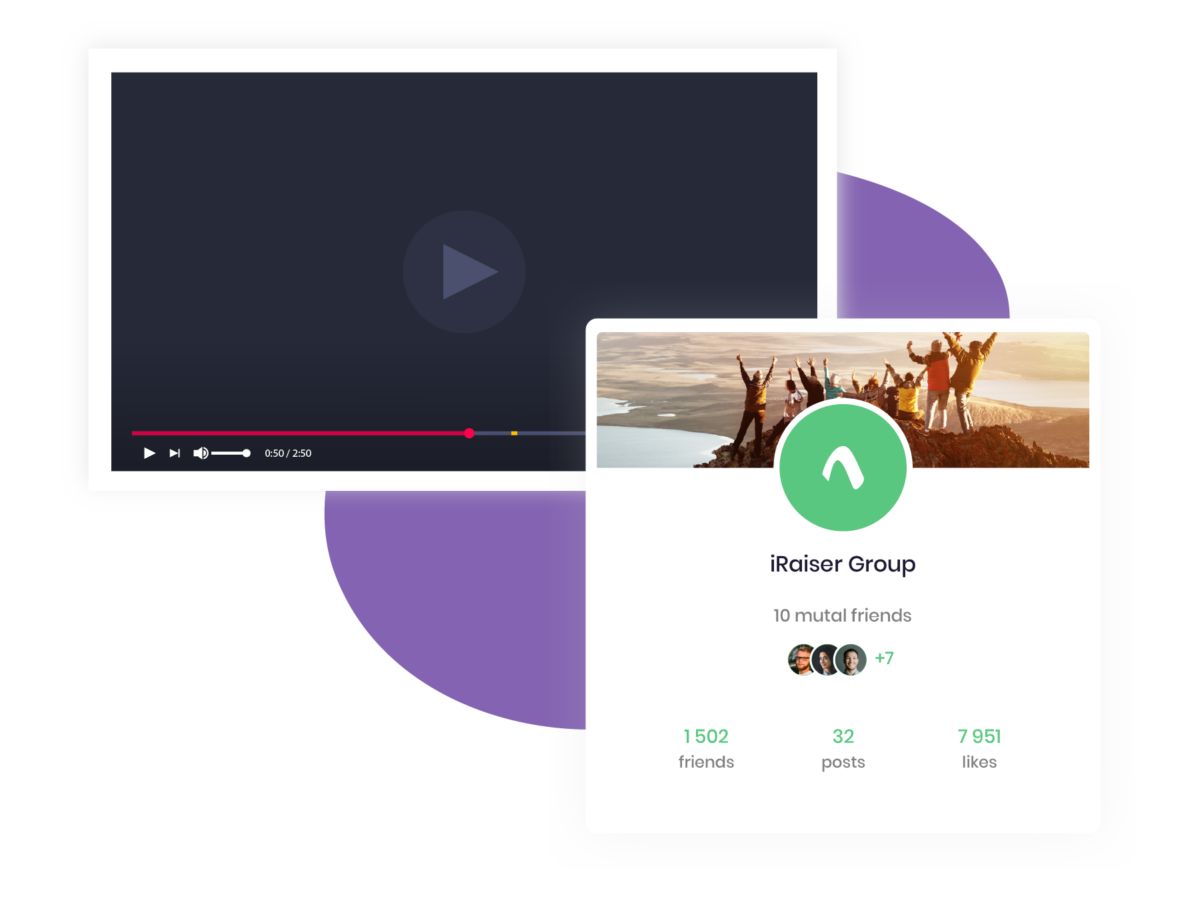
A system for collecting visitors’ contacts
One of the most important assets you can develop over time is your list of potential donors, because having the contacts of people who have shown interest in your business is – and will increasingly become – crucial. We struggle to bring visitors to our site, not even making an attempt to get contact information is not smart, at least entrepreneurially speaking (and yes, fundraisers are the entrepreneurs of not-for-profits). The best thing to do in this respect is to have a contact capture form and a good reason to offer our supporters in exchange for their contact information. Generally, the lead magnet of point two is a very good practical reason to make the contact/lead magnet exchange, but it must be promoted by focusing all the attention on the benefits provided by the lead magnet itself.
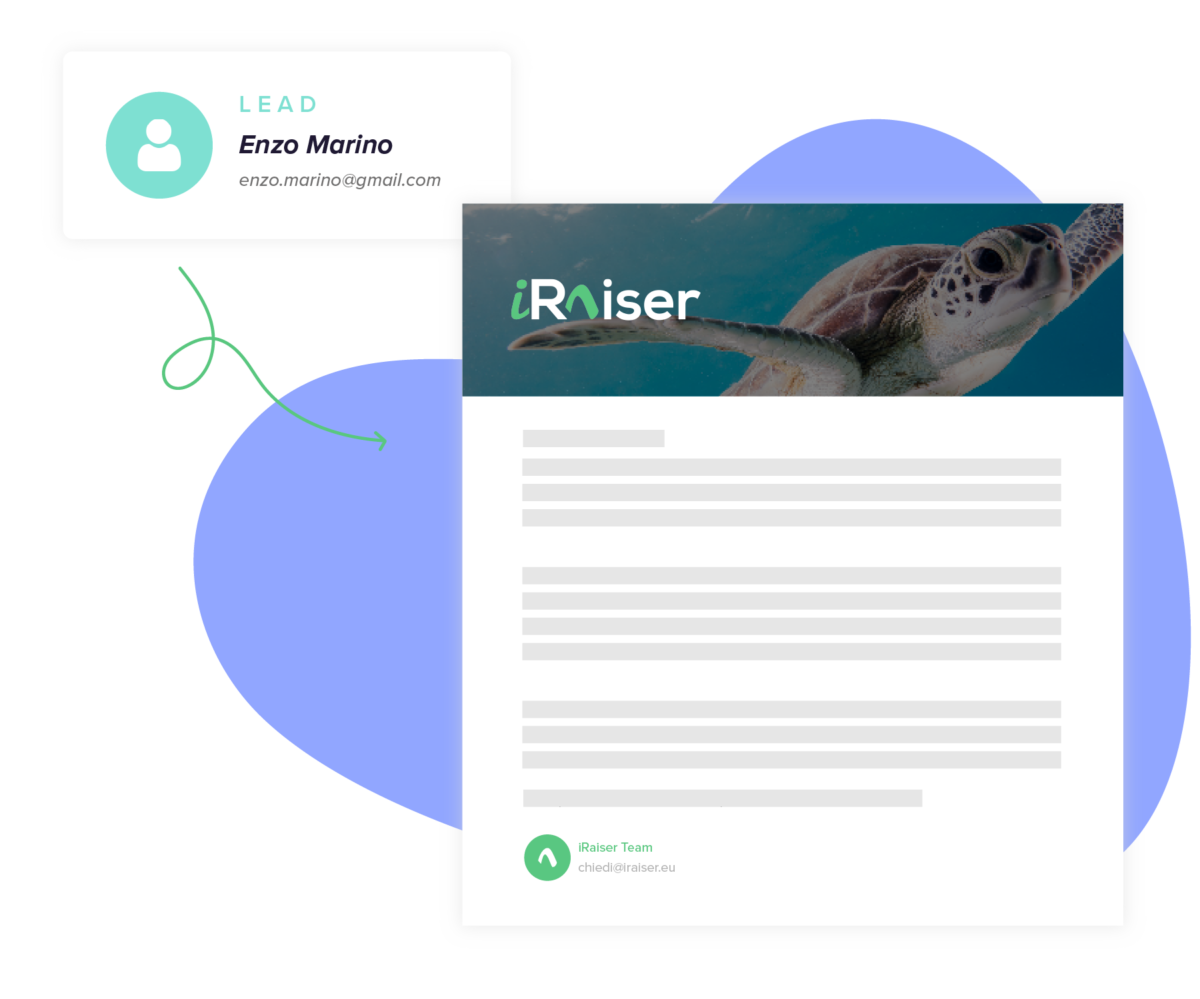
At least one follow-up action, as automatic as possible
By follow-up we mean all communicative actions carried out as a reminder of a previous action. If, for example, after sending our lead magnet we trigger an automatic sequence of emails, that is a follow-up sequence. Well, why didn’t you call it an email sequence instead of a follow-up, you may be asking yourself. There are two simple reasons: the first is that we need to get away from the view that contacts are just emails. Effective marketing is not 100% digital, but it is 100% integrated marketing, i.e. where communication takes place in different media, not just online. The second reason is that I want to push you to differentiate yourself from what all your competitors are doing, because yes, even if you work in an charity, you have competitors. I want to encourage you to get out of the marketing incest of our industry and think about what you could do to reach your potential customers in an environment where there are as few competitors as possible.
Effective & relevant videos and images to stimulate action
Those who know me, know how much I tend to repeat myself about the importance of using photos created specifically for our purposes or the need to adopt a video-first communication as much as possible. But what makes sense here is that when we say ‘really relevant’ we mean really relevant to our donors. In this sense, the best thing to do is to talk about their problems, their wishes, and how our products plan to help them in a specific and precise way.
Reviews and testimonials
What others say about you is infinitely more powerful than what you say about yourself. This is exactly why the people who come to your organisation through a recommendation are by far the easiest people to sell to. Your visitors already know that they will find messages on your website that your charity is the best, but you can hack this cognitive process by putting reviews and testimonials on your website. Keep in mind that 50% of people who conduct online researches that result in a financial transaction will check reviews to learn about an organisation’s reputation through the words of a third party, a source they find less biased and more honest.
Clear headlines and precise instructions
This point needs to be constantly reiterated: there is so much confusion and so much information overload that we need to calibrate the information we put on our website as much as possible: titles must be clear, instructions precise, call to action self-explanatory.
Highly visible and easily accessible contact information and chats
It is advisable to have contact information prominently displayed on the homepage, for two distinct reasons:
– The first is that for many niches contact remains one of the simplest actions a user can take with us. Calling or sending a message in a Whatsapp chat are actions with a very low threshold of difficulty and commitment for the user: they can make the first contact without risking practically anything, remaining in an environment that is safe for them (the chat or the phone call) and thus beginning to explore our organisation.
– The second reason is much more psychological and is linked to the general attitude that exists often towards realities that are still unknown. When we talk about something we don’t know yet, we tend to activate a fraud detector in our brain and sometimes we expect bad experiences just about everywhere. Putting contact information at the top of the homepage – such as a telephone number or a Whatsapp chat – is a psychological operation that makes it clear from the outset that the page the user has landed on is that of a serious organisation that really exists and that he can test for himself.
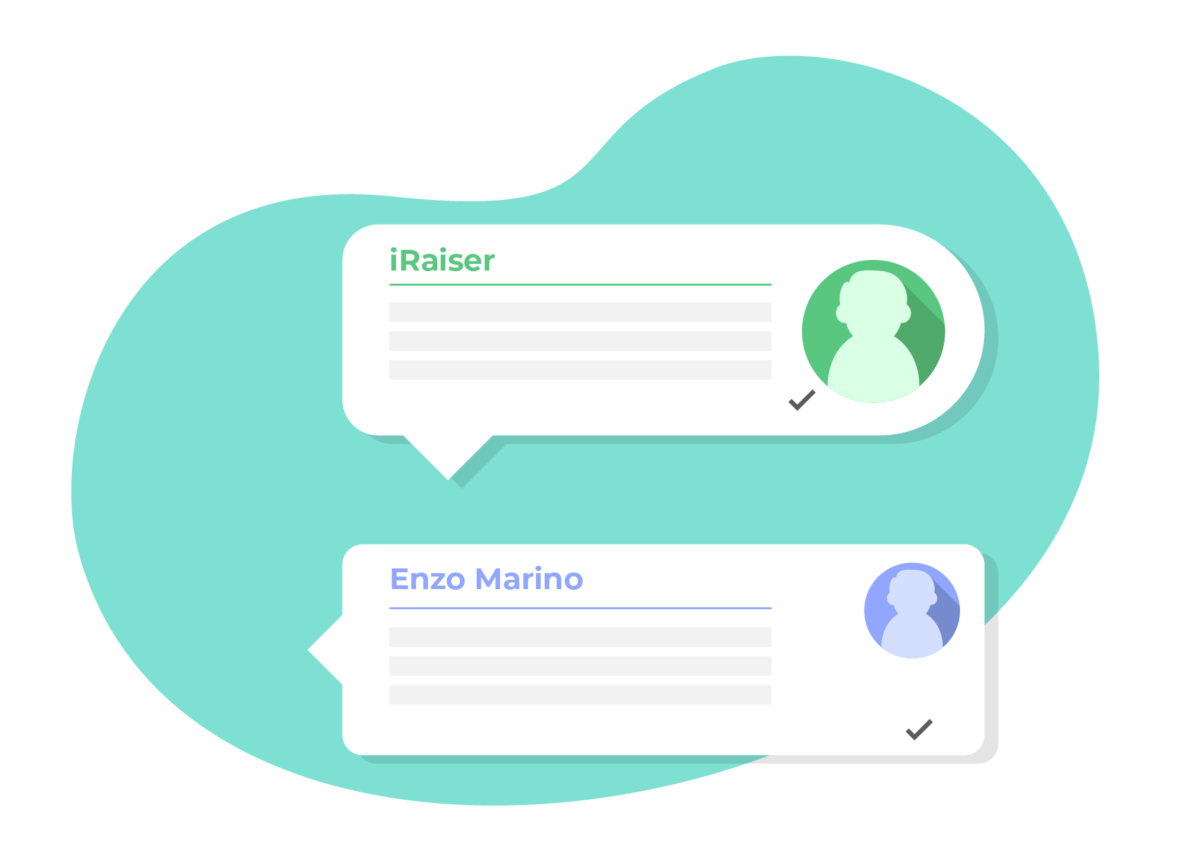
As you may have noticed, all this little reflection was based on a basic assumption: for a website and in particular for the donation page, being aesthetically pleasing is not a sufficient condition for its efficiency, because beautiful websites… are simply beautiful. It is up to you, as a fundraiser or marketer of the not-for-profit organisation you work for, to ensure that the focus remains on the fundraising processes. If you don’t do it, nobody else will.
Want to know how we can help you improve your fundraising?
Schedule a meeting with one of our experts for a free demo!





